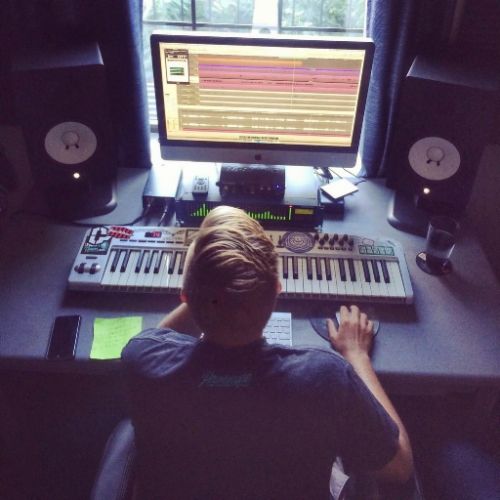
We are now deep into the Hyperbits
masterclass series. Having already covered ideas such as
completing tracks, writing musical ideas, and organizing
workflow, it is now time to delve into the more technical aspects of production. That is why this week’s main focus was the first half of a two-week class on processing chains
and advanced mixing techniques.Processing chains are arguably the core of how your music is going to sound. How you process noises coming out of soft synths can truly be unique to you and help you mold your own sound, so it is important to know exactly what is going on throughout the chain. Things like Reductive EQ, Compression, Saturation, Additive EQ, and Effects can have a wildly different way of contorting the end result. Even the order that you put these different effects ( as in saturation before EQ or vice-vera) can change the overall outcome.
Hyperbits cannot stress enough the fact that all these processing changes are subtle. There is no magic trick you can slap onto your busses or channels which will instantly make it sound polished and full and professional sounding. Dialing in five to eight different effects all with only 5-15% dry/wet signals can turn a synth pattern into something much louder, way more than slapping on a sausage fattener and cranking up the knobs.
All processing chains should follow a general formula or order. We were taught that you should generally start with some sort of saturation first to initially beef up the sound by adding more frequencies. After that, you should follow it up with a reductive EQ. This step of equalization helps remove unwanted frequencies from the sound; maybe you don’t want any low frequencies to clash with your bass line or maybe that saturation plugin you slapped on added a bit too many high frequencies that now need to be tamed. Next thing you want to add is compression to control some of the dynamics in your sound. This is also a great time to add a bit of side chain compression as well to help make your synths pump against the kick drum! After compression, try putting on an additive EQ. These EQs are different than the reductive equalizer, so try to find one that models itself after analogue gear for this stage in the processing chain. This EQ should be designed to add just a slight amount of shine to get your channels to a commercial level. And the final step in processing is any additional effects such as reverb and delay.
Overall, the attention to detail found within processing chains can entirely revamp the way your music sounds, and Hyperbits has shared an insane amount of knowledge and actionable techniques within each part of the processing chain (saturation, reductive eq, compression, sidechain, additive eq). With a focus on adding analogue warmth, my music is slowly, but surely, starting to sound less digital, dull and dead, and more analogue, warm and alive.
This concludes the first week out of a two-part lesson on processing chains. Next week we are going to go over some of the technical details around reverbs and more specialization. For more details on this phenomenal
Masterclass, head over to Hyperbit’s
website and sign up to be first in line for future sessions. 




![[INTERVIEW] ALLKNIGHT Talks Songwriting, Rick Astley, Touring, And More](https://www.edmtunes.com/wp-content/uploads/2024/10/230608000000020002-copia-218x150.jpg)

